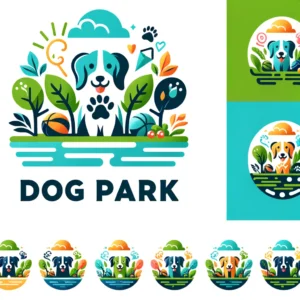How to Write a Dog Park Business Plan
The dog park industry has experienced significant growth over the past decade, resulting in a rising demand for business plans, templates, and financial projections.
The growth of dog parks can be attributed to several factors, as analyzed by our business plan expert. A key aspect of their popularity is their adaptability, providing sheltered and open spaces and allowing dogs of all sizes to play and mingle in any weather. Entrepreneurs have quickly innovated within the space, adding unique offerings like cafes or bars where pet owners can relax while their pets play. These enhancements significantly improve the dog park experience and attract more visitors.
For those looking to enter this burgeoning market, whether through an indoor, outdoor, or combined dog park model, laying a solid foundation is crucial for success. Our business plan expert offers a wealth of advice and strategies to help dog park entrepreneurs develop thorough and effective business plans, ensuring a smooth start and sustainable growth.
CHECK OUT OUR DOG PARK BUSINESS PLAN TEMPLATE!!
Executive Summary for a Dog Park Business Plan.
The executive summary of a dog park business plan should follow a structure similar to traditional plans. It should begin by providing essential details such as the name of the dog park company, its location, and the type of legal structure adopted, such as a limited liability company, corporation, or sole proprietorship. Additionally, it is recommended to include a brief overview of how the organization intends to generate revenue from the dog park. This can vary from charging admission fees for accessing the park's amenities to offering additional services like selling coffee, alcoholic beverages, and pet-related items. Regardless of the chosen revenue model or business structure, it is crucial to introduce these elements in the executive summary section. By doing so, potential investors or stakeholders can quickly grasp the key aspects of the dog park business and its potential for success.
Company Information and Location for a Dog Park.

The choice of location is a pivotal detail in the company information segment of a dog park business plan. Our analysis reveals that the most prosperous dog parks are strategically situated along major roads close to residential zones, especially those housing apartment dwellers. This decision caters to the needs of apartment and small home residents who often lack sufficient outdoor space for their pets' physical activities. As a result, a nearby dog park offers a vital solution for these pet owners, providing a much-needed venue for regular pet exercise.
Opting for such strategic locations enables dog park businesses to cultivate a dedicated clientele quickly. Positioned near residential areas where outdoor space for pets is scarce, dog parks meet an essential community need. This makes them a preferred and frequented spot for pet owners eager to ensure their pets get enough physical activity.
Need Help Writing a Dog Park Business Plan?
Call or Text Paul, Doctoral Candidate, MBA.
321-948-9588
Email: Paulb@QualityBusinessPlan.com
Hours of Operation: Monday through Friday, 8 am to 9 pm EST.
Our business plan writer is located in Orlando, FL.
CLICK HERE TO CONTACT US TODAY!!!
Product Description and Competitive Advantages for a Dog Park Business
Dog daycare services serve as the primary revenue generator for most dog daycare businesses. However, grooming and boarding services also play a significant role as secondary and tertiary revenue streams. When describing the dog daycare service, it is essential to outline the amenities typically included. These may comprise individual kennels, one to two hours of outdoor playtime, and various complimentary services.
After establishing the core amenities, I suggest exploring additional services to enhance the dog daycare experience. These may include a TV in the kennel, offering premium dog food, or providing individualized playtime. By establishing this foundation, the reader understands the business's fundamental components, which often contribute to its competitive advantage. Subsequently, the focus can shift to discussing complementary services such as grooming, boarding, and other premium amenities.
This strategic approach allows the reader to comprehend the core aspects of the business and its differentiating factors. By emphasizing the foundational elements and introducing supplementary services, the business can effectively showcase its unique offerings and appeal to a broader customer base.
Target Market.
When developing a dog daycare business plan, it is crucial to identify and target specific demographics. The target market for a dog daycare business can encompass different segments. One primary demographic includes area residents, including individuals residing in houses and apartments. Typically, this demographic is geographically defined within a 5-mile radius of the business location. Another target market segment is individuals within a 5-mile radius of the dog daycare facility. This demographic often includes office workers, healthcare professionals, and retail employees.
The strategy behind targeting this particular demographic is to offer convenience to pet owners. They can drop off their dogs at the daycare facility on their way to work and pick them up on their way home. This approach relies on incorporating a dog daycare service into the business model. Regardless of the chosen target market, it is essential to identify and describe the reasons for selecting a specific population segment.
By defining the target market, the business plan writer recommends aligning the dog daycare business with the identified demographic and explaining why this particular population segment was chosen. Understanding the target market and its rationale is critical for developing effective marketing strategies and tailoring services to meet the needs and preferences of the intended customer base.
Industry Research for a Dog Exercise Park Business Plan Template
While a subset of the more significant pet industry, the dog park industry presents unique challenges when gathering industry-specific information for a comprehensive business plan. However, there are practical approaches to overcome this hurdle. When our business plan writer crafts a dog park business plan, the first step is introducing relevant statistics about dog parks. For instance, it is noteworthy that dog parks integrated with restaurants have witnessed tremendous growth, reaching a staggering $64 billion industry over the past few years. Additionally, the Trust for Public Land website has reported that dog park expansion surpasses all other park types in the United States.
By highlighting these industry-specific statistics, the business plan writer can delve into the broader pet industry to gather supporting details, facts, and figures. This broader industry research provides a foundation for understanding the trends, demands, and potential opportunities within the dog park sector. Drawing upon the more significant pet industry helps to fill any gaps in specific dog park data and lends credibility to the business plan.
Although compiling comprehensive industry-specific information for dog parks can be challenging, utilizing industry statistics and leveraging the broader pet industry's research allows for a well-rounded and informative industry section in the dog exercise park business plan template.
Owner and Management Section.
In the dog park business plan, the owner and management section plays a crucial role in establishing the expertise and passion behind the venture. It is essential to begin by introducing the owner and their personal or professional experiences with pet ownership. These experiences are a foundation for their understanding and dedication to the industry. Suppose the owner has personal experiences with pets, such as growing up on a farm surrounded by various animals. In that case, describing these formative experiences and how they fostered a deep love and appreciation for pets, specifically dogs is essential. Sharing personal anecdotes can help convey the owner's genuine connection to the world of pets and their motivation to establish a dog park.
On the other hand, if the owner's experiences are primarily professional, such as receiving educational training in dog handling or holding positions at kennels, it is vital to highlight these credentials. Mentioning prior entrepreneurial ventures in the pet industry, such as running a successful dog walking service, can also be valuable. Given the personal nature of this section, it is often preferable to present the information in paragraph form rather than using bullet points. This format allows for a more narrative approach, connecting the reader with the owner's story, passion, and qualifications.
By effectively presenting the owner's experiences and expertise, the owner and management section of the dog park business plan establishes credibility, instills confidence, and showcases the personal commitment behind the venture.
Funding Request for a Dog Park Business Plan.

The funding request section of a dog park business plan or template should begin by clearly stating the total funding required to launch the business successfully. To determine this amount, it is recommended to outline specific categories in an Excel spreadsheet. The first category to consider is startup costs. These costs encompass various elements such as location deposits, facility construction or renovation expenses, working capital, inventory of pet supplies, staff hiring and training, and necessary technological equipment like a point-of-sale system.
After identifying the startup costs, it is essential to describe the equipment required for the dog park, including indoor and outdoor playground equipment, appropriate flooring or carpeting, and advertising materials to effectively reach and inform the target market about the new business. Once each category is detailed, the total funding needed for the startup can be calculated and prominently mentioned in the opening paragraph of the funding request section.
The funding request section establishes a comprehensive overview of the investment needed to bring the dog park business to fruition by presenting a clear breakdown of the financial requirements, including equipment and startup costs. This approach demonstrates transparency, professionalism, and a well-prepared plan, increasing the likelihood of securing the necessary funding for a successful launch.
Financials for a Dog Park Business Plan.
In crafting the financial segment of a dog park business plan, it's pivotal to begin with a detailed presentation of the underlying assumptions driving the financial forecasts. This groundwork should encompass expected daily attendance, the per-visitor cost implications, and anticipated growth trajectories for patronage. With these assumptions in place, the plan should be segmented into a meticulous breakdown of daily financial activities.
This segment should meticulously itemize revenue streams, including entrance fees, proceeds from the sale of merchandise in the onsite gift shop, and earnings from supplementary offerings, such as on-premises beverage concessions. Pairing each revenue stream with its associated variable costs is crucial, ensuring a clear correlation between income sources and expenditure. The subtraction of these variable expenses from gross revenues will unveil the net daily financial gain, offering a clear picture of the dog park's fiscal health.
It might be beneficial to include projections on the scalability of revenue streams to enhance this financial narrative, considering potential expansions such as event hosting or partnerships with local pet businesses. This comprehensive approach not only showcases current financial viability but also illuminates the pathway for future growth and sustainability of the dog park venture.
Pro Forma Financial Projection and Profit Analysis: Estimating Monthly Revenue and Net Profit
To expand on this figure, multiply the daily revenue by 30 to estimate the monthly revenue expectation. From this monthly revenue, subtract fixed costs like leases, labor expenses, and maintenance costs. The difference represents the net profit for the month. Building upon this foundation, growth estimates can be used to anticipate annual sales and project revenue for the next five years.
By presenting a thorough financial outlook, including revenue, costs, and growth projections, the financials section of the dog exercise park business plan provides a clear understanding of the anticipated financial performance and allows for strategic planning and decision-making.
Hopefully, these insightful tips and tricks for writing a business plan were helpful. Email or call us for help with a business plan or financial projections.
Author: Paul Borosky, Doctoral Candidate, MBA., Author
Owner of: Quality Business Plan and Quality Business Consultant.
Revised: 2/20/24